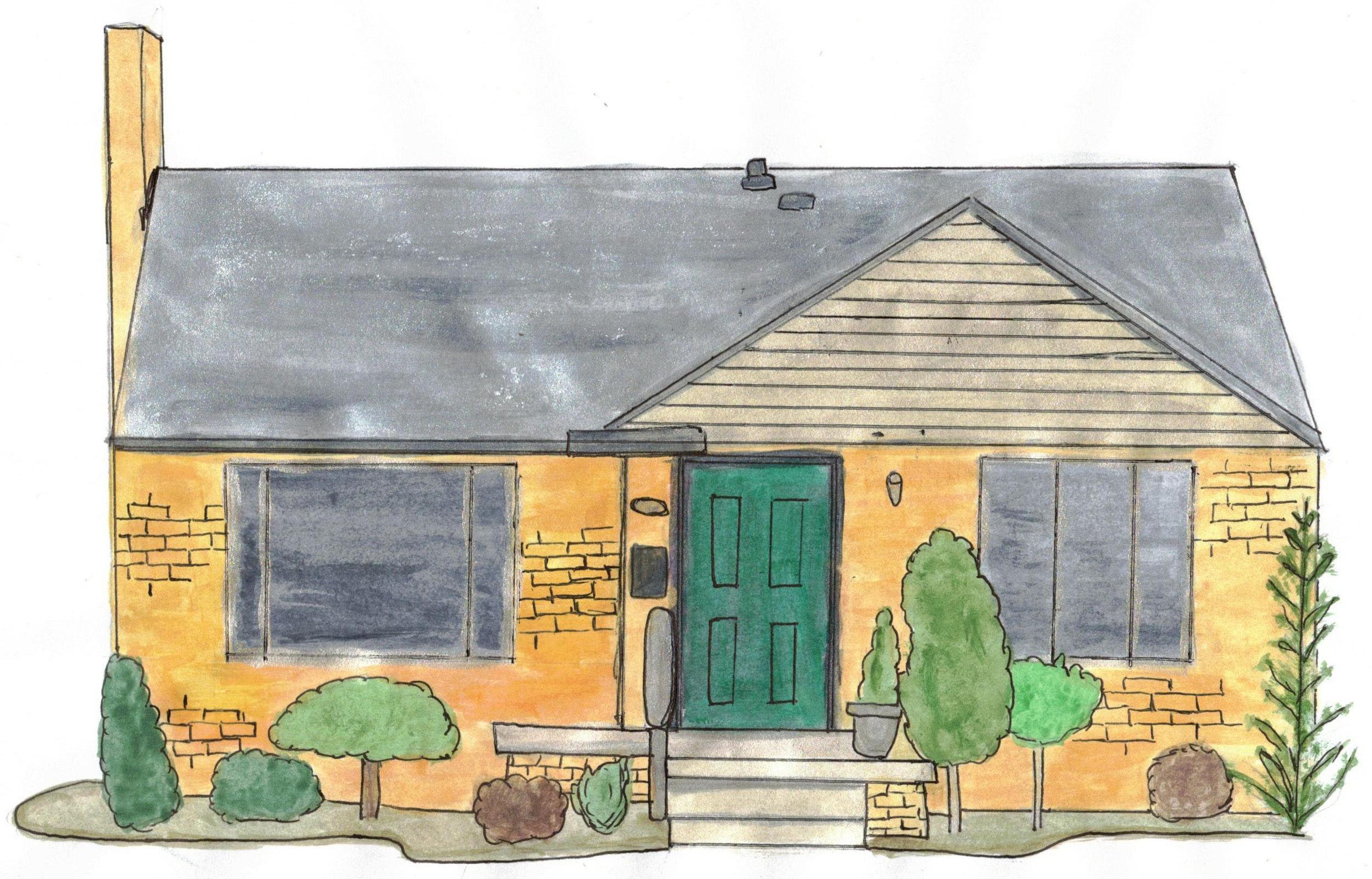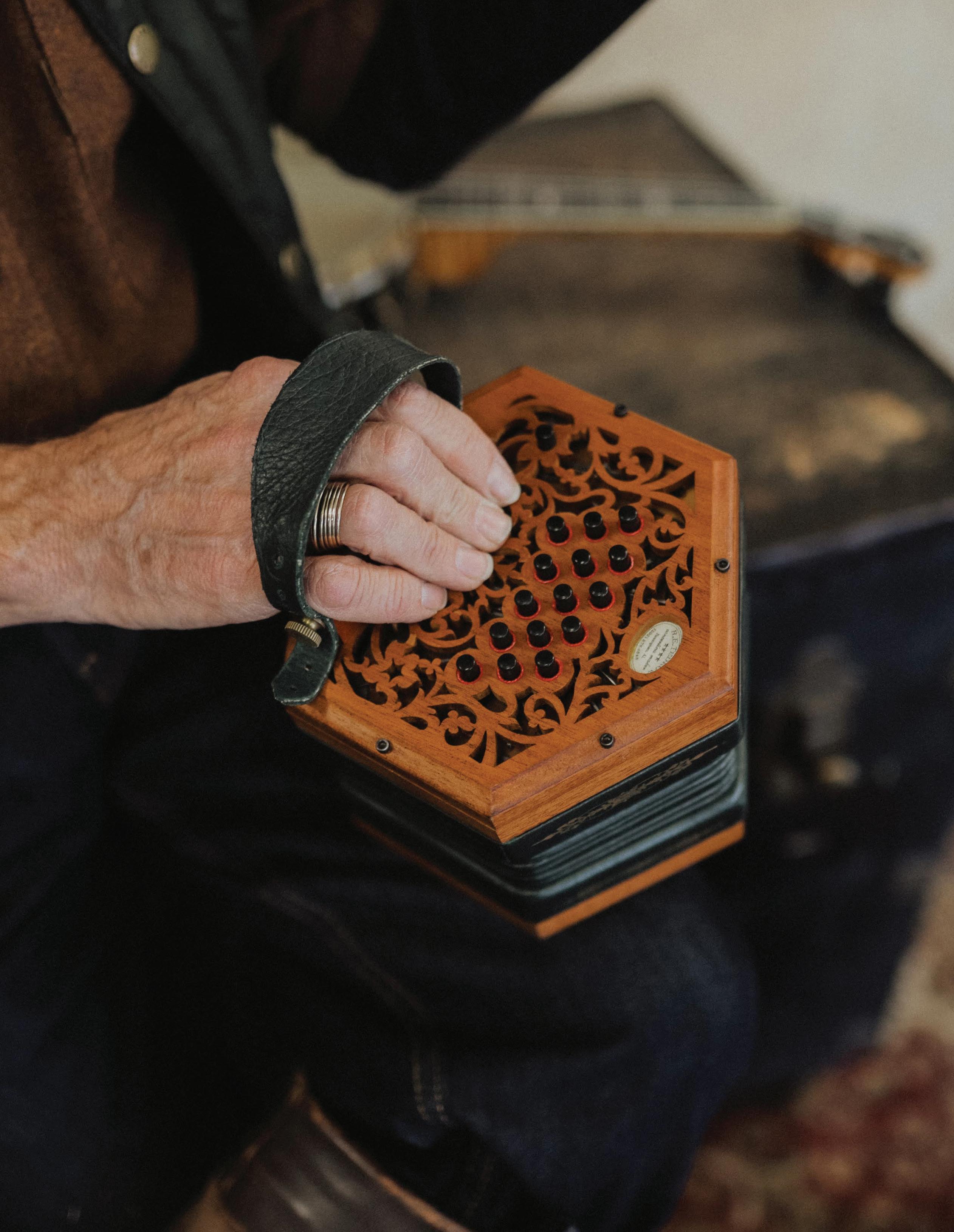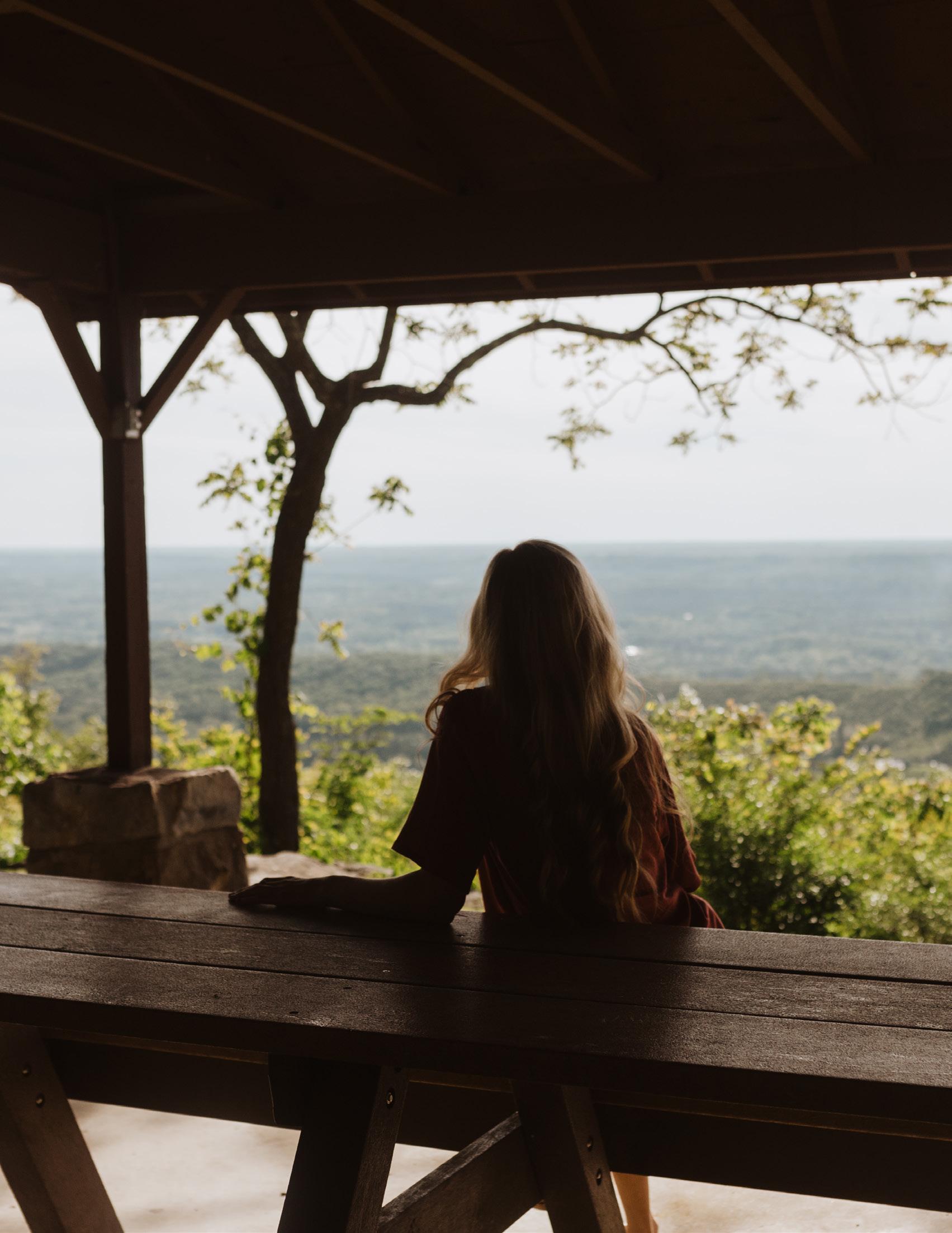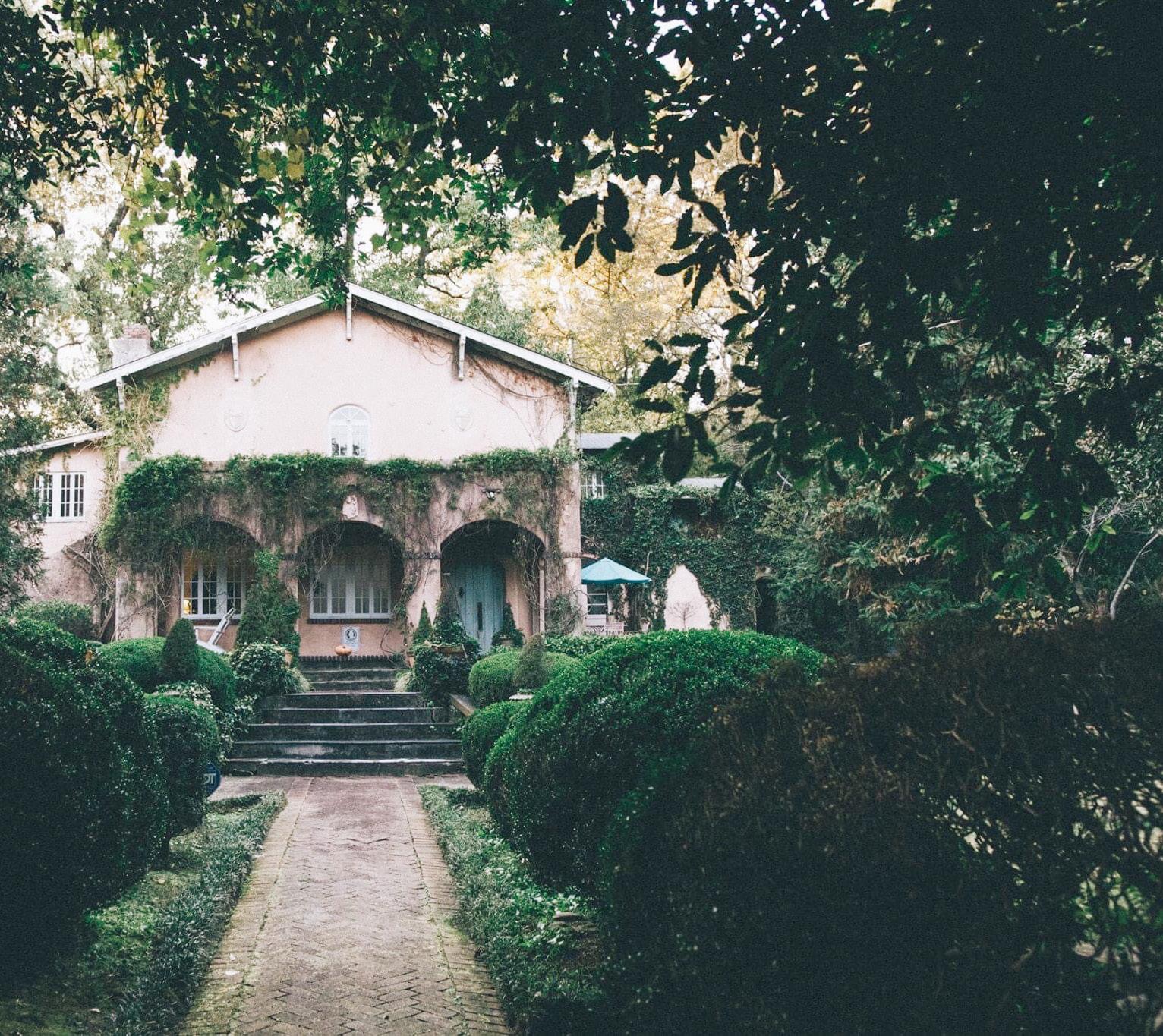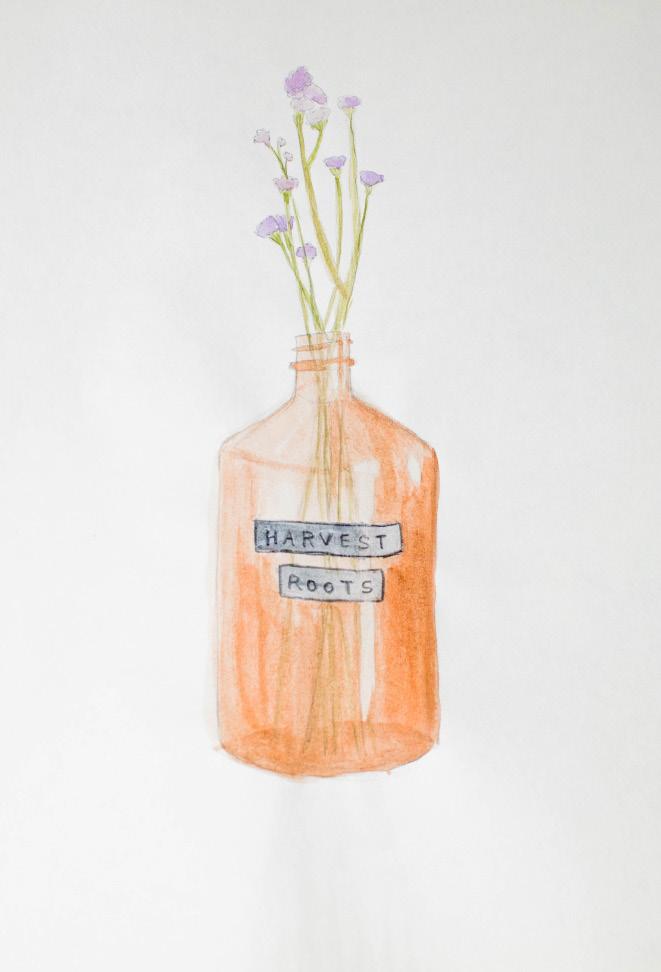
10 minute read
SO WE NEVER FORGET
THIS SHOULD NEVER HAPPEN AGAIN
T H E M I S S I O N A N D W O R K O F T H E B I R M I N G H A M H O L O C A U S T E D U C A T I O N C E N T E R A N D I T S I M P A C T O N S U R V I V O R S
Advertisement
BY: SHELLY FULKS
His childhood changed quickly: children shunned him and left him out of afterschool activities.
“The Stormtroopers began marching up and down the streets,” May recalled.
“They began boycotting the Jewish stores. That was just the beginning of the Nazi regime of persecuting the Jews.”
May was fortunate to have wealthy relatives in Frankfurt who opened their apartment to him so he could attend a Jewish day school. Not long after his move to Frankfurt, the Nuremburg laws were passed, further excluding Jews from city activities and employment.
In November of 1938, May and his aunt were warned to not return to their apartment that day or night.
On the night now known as Kristallnacht, the pair walked the streets until morning. No one knew they were Jews, so they could do so freely. “From the outside, we could see nothing happening to our apartment. When we walked to my school, we could see it burning. I remember seeing the fire department watching the school burn to make sure none of the surrounding buildings caught fire,” May said.
Eventually the pair gathered the courage to return to their home. While the outside of the building seemed unharmed, the inside was demolished. Furniture was turned over, mattresses were cut, washbasins were broken and fixtures were destroyed.
With the apartment in Frankfurt upheaved just like his family home in Camberg, neither May nor his family had anywhere to go.
Just a month later, May moved to a boarding school in England. The country had opened its borders to all Jewish children under the age of 16. May was able to receive an education, be housed and fed.
He remembers writing to his parents from England begging them to get out of Germany. They were able to escape in September of 1939 just days before Germany declared war on Poland.
PIECES OF ROBERT MAY’S CHILDHOOD IN GERMANY
Robert May’s Passport marked with a “J”
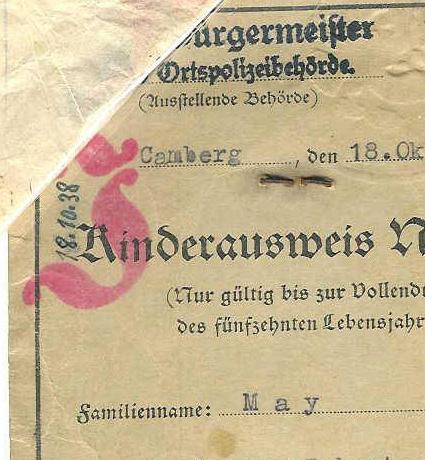
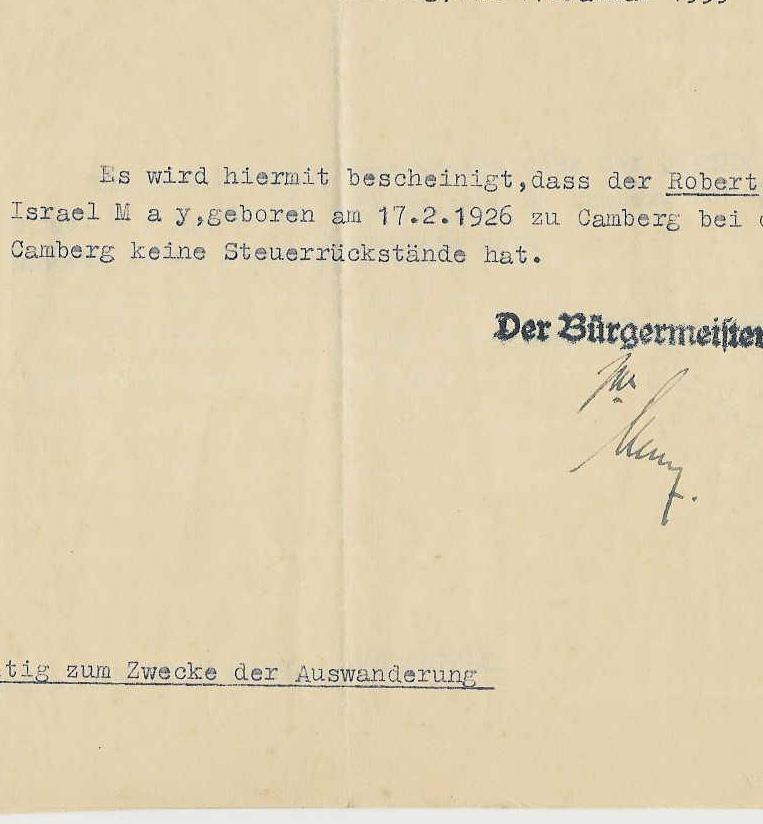
Emmigration papers from Germany. Name written as Robert ISRAEL Marcus May

The idea for this exhibit was born as Becky and Alan Seitel were trying to appreciate and respect each other’s faiths. Since Becky, a Christian, and Alan, a Jew, did not worship together, they wanted an opportunity to share a similar experience out of that traditional worship experience.
Giving back seemed like the best option to find this outlet. Becky had rediscovered her love of photography so this guided them towards art, but the cause that they would support was a bit more difficult to determine.
After attending a local Holocaust memorial, the Seitels found their cause.
“I had never met a Holocaust survivor and had certainly never heard a first-hand account of that horrible time in history,” said Becky Seitel.
With the help of Mitzi Levin, an artist who is also Christian and married to a Jewish husband, the two women completed their original exhibit featuring nine survivors from the Birmingham area.
The exhibit was originally shown in the Birmingham Levite Jewish Community Center in 2007 and was then invited to be shown at the Birmingham Civil Rights Institute.
After being shown at the Civil Rights Institute, the exhibit grew from telling the stories of nine to the stories of 20 from all over the state. It was then donated to the Birmingham Holocaust Education Center with the hopes of being able to educate students and other residents of the state.
Many survivors suffered ridicule and anti-Semitism far before Hitler came into power in Germany and discuss their childhoods where they were bullied by both their classmates and their teachers. Jack Bass was only eight years old when his teacher made him come up to the front of the class to read a demeaning portion of the poem “The Tree Which Wanted to Change Its Leaves” by Friedrich Ruckert. Whenever the poem was read, Jack would have to come to the front to read the story of the bearded Jew who stole the golden leaves from the tree.
Ilse and Ruth, two sisters who tell their stories, grew up in Germany and focus on the happier memories in their childhoods. Ruth tells the stories of riding in her father’s car before the war. Ilse remembers her mother’s cooking for Shabbat.
Just as they focused on different elements of their childhood, each survivor highlights elements of their lives that they are especially appreciative of after the cruel treatment they faced in concentration camps.
Henry Aizenman was so thankful to have the opportunity to be another year older that he celebrates his birthday twice—once on the day he was born and once on the day he was liberated.
“The Holocaust robbed six million Jews of celebrating another birthday when it eliminated approximately twothirds of Europe’s Jewish population,” Aizenman says.
Each survivor offers a unique perspective and gratefulness for their survival.
“Although I realize that every day is like a present from G-d, I also realize that the Germans and their Hungarian collaborators stole from me one of the most precious things in life: the magic of youth,” Agnes Tennenbaum said.
Ruth in front of her portion of the From Darkness into Life exhibit
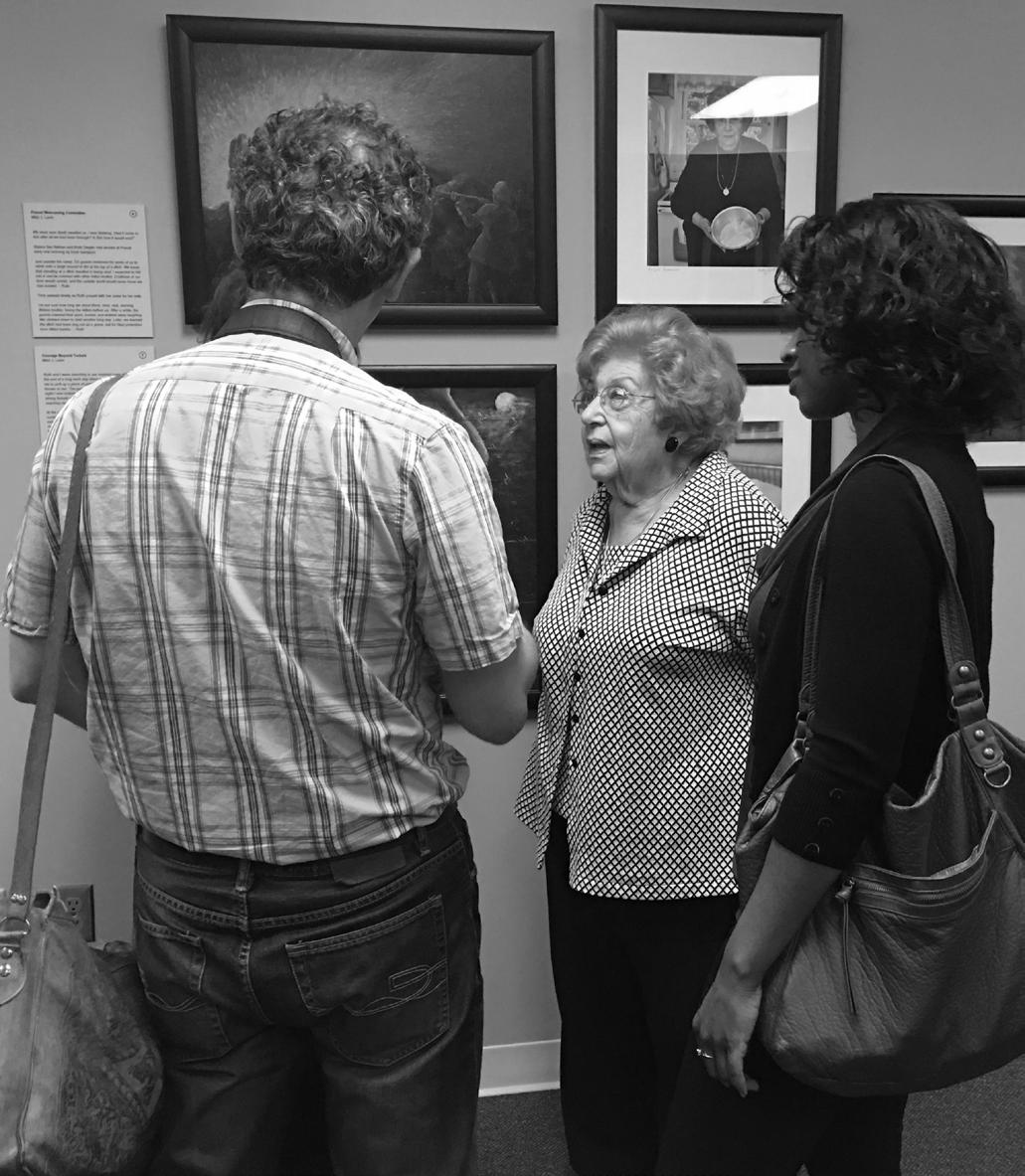
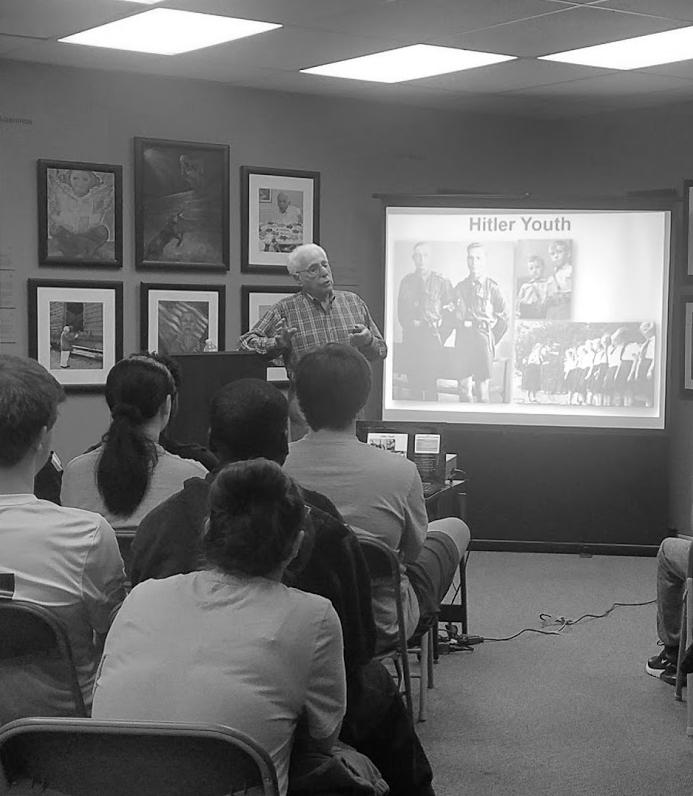
Robert May Speaking - Holt High School at the BHEC, April 2019
Once again, in the nick of time, their visas arrived just before the London Blitz began in August of 1940. The family took a convoy from Liverpool to Cuba. With blacked out windows and horrible food, the journey was anything but pleasant.
“When we were closer to the Irish channel, I remember watching a boat not too far in the distance being torpedoed. We were holding on to our life vests and standing underneath a lifeboat,” May said.
When the Birmingham Holocaust Education Center was founded in 2002, the organizers had no budget, no plans and no ideas. They simply knew that the stories of survivors like Robert May needed to be shared. Now, almost 20 years later, a small team of employees, a few remaining survivors and passionate teachers and volunteers are doing just that.
Ann Mollengarden, Robert May’s daughter, was one of those founders. She had just returned from a national workshop about the Holocaust and needed to know what was being done to educate the Birmingham area on those tragic events.
Along with a broader community of educators and survivors, Mollengarden began learning more about other survivors’ experiences from the children’s section of the library. Now, as the education coordinator for the BHEC, she helps others learn.
From the end of the war until the 1960’s, many survivors were simply trying to put the pieces of their lives back together. Many, including May, had hidden their past away.
“In Birmingham, survivors didn’t begin speaking about their experiences until the 1980s. It takes a while to muster the courage to speak about it,” Mollengarden said.
Now the Birmingham Holocaust Education Center provides numerous ways for these survivors’ stories to be told.
“One thing that is so heartwarming is when survivors say to me ‘You have helped me be able to tell my story.’ They know that we will continue telling their stories,” said Mollengarden. May is one of the three survivors still able to go on speaking engagements through the center. Worldwide, it is estimated that there are 400,000 living survivors of the Holocaust.
LESSONS FROM A SURVIVOR What can you learn from the life of Robert May?
1First, you learn that only in America could a little boy who was raised in a little town in a strange country could they come across the ocean could they achieve a decent life and make a success of their life.
2
Second, only through education can you make the most of the adversities of life. I stress education-- basically this is what lifted me up from the masses. I was able to achieve something because I went to a decent school. I did not miss out on my education like a lot of the other refugees who escaped.
3Third, it takes a family to raise a child. A mother and father cannot always raise a child but it takes a family unit to raise and educate a child and make something out of a child.
4
Fourth, and not least, this should never happen again.
Through their children, trained speakers and prepared presentations, the BHEC is working to ensure their stories are told long after the remaining survivors cannot.
“It is important that we continue their legacy. We must make sure they know what they experienced was not in vain and people will continue to learn,” Mollengarden said.
The BHEC tells these survivors stories in several ways. Created to celebrate the lives of 20 Alabama Holocaust survivors, the Darkness into Life exhibit of the Birmingham Holocaust education center is a beautiful collaboration of photography and art blended with the stories of survivors, like the one of Robert May. Incorporating the words and stories of survivors with images of the present and paintings of their memories, the exhibit From Darkness into Light is a powerful and moving experience whether you are visiting online or in person.
“It’s different. It is meant to be uplifting. Horrible stories, called Darkness into Life because life continues. It’s not because they don’t have wounds, but you have to move forward and carry those wounds with you,” said Mollengarden while describing the exhibit. When survivors like May tell their story, they are able to teach the lessons that they believe need to be taught. Each time May speaks with a class, he ends his talk with the question, “What can you learn from my life?”
“The exhibit isn’t something we commissioned; it just happened,” Mollengarden explained. In addition to connecting students and others to the individuals who survived the holocaust, the BHEC hosts
Holocaust Survivors at L’Chaim, a celebration of life, in 2019
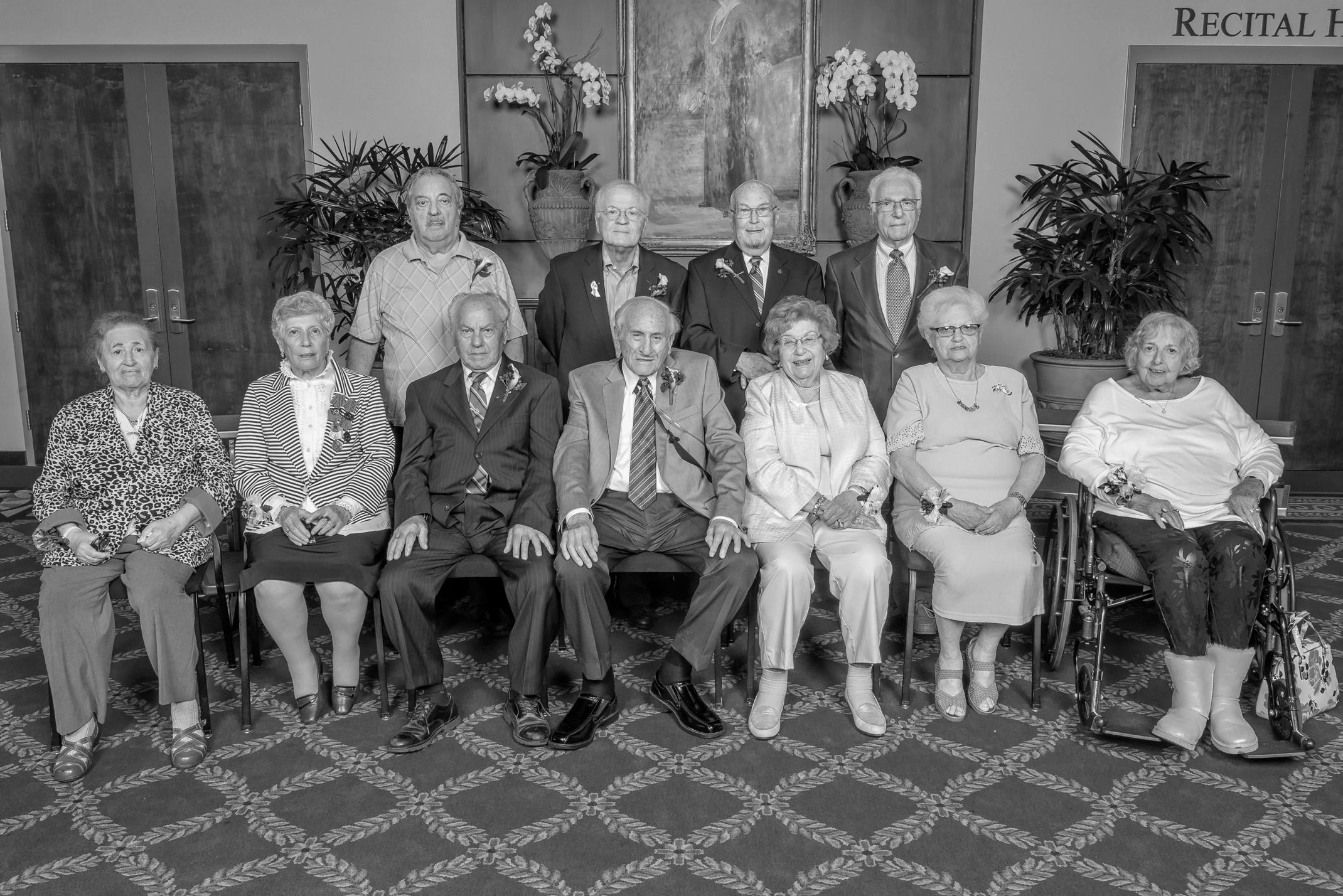
teachers for workshops and cadres. They provide a number of scholarships each year for teachers to attend national workshops about the holocaust. Their website even provides PowerPoint presentations and other materials for teachers to use as resources while they teach. “We hope to entice teachers with materials that they want to incorporate into their classroom more. We have teachers who call to ask specific questions. It is amazing to see how creative these teachers are,” said Mollengarden. “Any time you can touch a person and see the light go off in their eyes. To be able to open a door to something that the average person has not been aware of is profound. It’s the small little things that make the biggest impact. It is special when you really touch someone and make them think of the experiences of others,” Mollengarden said. Through original stage productions, holocaust survivor testimonies, name reading and other events, staff and volunteers of the center are continually working to ensure that the lessons of Robert May and the other survivors are learned and that something so tragic can never happen again. “It is special when you really touch someone and make them think of the experiences of others,” --Ann Mollengarden

